Articles of 2009
1949-The Perfect Storm Of Pugilism
Images appear like electric ghosts when the knob is pulled on the Philco console. Eventually white letters shimmy on the television screen -“Gillette Cavalcade of Sports”- and a ringside bell clangs. Friends and neighbors crowd the living room and jockey to get near the 10 inch screen.
It’s 1949.
Jimmy Powers opens the show with a trusty bellow: “Friday night fights are on the air!”
This was the time when boxing was second only to baseball in the affections of the American public. Those lucky enough to have a television set watched sluggers like Joe DiMaggio put wood to cork and cowhide; but NBC had a line-up of sluggers who put cowhide to flesh and bone. The airwaves were saturated with the Sweet Science, and it seemed as if everyone had a sweet tooth. Today we have anonymous legions with Mickey Mouse titles. “Belt-holders” we call them; but back then there were eight World Champions demonstrating their fighting prowess for a nation still celebrating its own after World War II. Eight World Champions. And your aunt could have rattled off the names of half of them. The ring was as uncomplicated as postwar America wished it was and yet was as integrated as a good cup of coffee. Champions, contenders, and a few journeymen of every shade had a chance to become household names and make a decent living: Rocky Castellani, Art Aragon, and Tiger Jones, known then and basically forgotten now, could be poster boys for diversity.
Sure, even during its golden eras boxing was a sport familiar with the sly, slick, and wicked –criminal elements have owned or influenced managers, officials, and individual fighters themselves. No honest fan would hold that boxing is among the purest of professions. Its critics, however, have more elemental problems with boxing –the very idea of it is offensive- and so it has been a punching bag since Cain put Abel down for the count. Some simply cannot see past violence and shrink from what boxing means and represents. It’s a wonder that they can muster up the testosterone to throw their shots in word or in print. We should be gentle with them because they know not what they’re talking about. Their eyes are untrained. They miss the greater part of it… and they don’t know ring history.
Boxing, for all of its faults, has presaged much that its critics celebrate today. Joe Louis got the thumbs-up from white America long before Barack Obama was born –and he did so with two numbers-runners out of Chicago and Detroit, not a PR machine juiced with millions in campaign contributions. Boxing also was and remains a source of great ethnic pride. It is multiculturalism magnified. Those who arrived on these shores throughout the twentieth century had their share of two-fisted folk heroes: Irish, Italian, Asian, and Hispanic immigrants to name a few. Jews who settled in places like Brownsville, NY saw their great traditions vicariously defended in the ring by their children when Nazi Germany began Ha Shoah. They took solace in knowing that Hitler’s jaw would become his hat had Al “Bummy” Davis (nee Albert Abraham Davidoff) landed a left hook.
When America had its back on the ropes during the years of the Great Depression (1929 ~1939), fight clubs were scattered like seeds in every city. Waiting in the gym was a who’s who of flat-nosed wise men ready to cultivate contenders. Ray Arcel, Whitey Bimstein, Freddie Brown, Charley Goldman, Mannie Seamon, Chickie Ferrera, Nick and Dan Florio were all active in New York City alone. Most eventually wound up at the legendary Stillman’s Gym on West 54th Street. Trainers like these cultivated a special crop of Americans not seen since. The dirty-faced novices who walked the block to a boxing gym as newspapers blew by like tumbleweeds kept both fists deep in their pockets. In the 1930s, these kids believed that those commodities –eight knuckles- were all that could keep poverty at bay. Some came because they had talent tried on street corners. Others came because there was nowhere else to go. Some came because they couldn’t sing or dance but wanted similar glory, others because their race or ethnicity offered them few other options.
…However they came, they came, and the gyms swelled. And the heavy bags heaved and the small bags danced. Ropes skipped and whipped with rhythm and whimsy. Sparring mates honed their punches on blood-spattered canvases. The concrete classrooms were drafty and hard on the nose, but it was here that countering jabs and slipping rights were taught by rote, where mistakes meant broken lips, where progress was quite literally determined by pressure. Over the next 10 years, they learned their lessons well. Growling stomachs had made them lions.
What does all of this mean? It means that a conflux of rare factors and events spawned greatness in the ring. The popularity of boxing, the glut of gyms and clubs, the presence of many A-list trainers to develop fighters, the sheer depth of the pool of potential and their familiarity with hardship –all combined to create a “perfect storm” of pugilism. The result? The fighters of the 1940s can rightly claim to be boxing’s “Greatest Generation”. What’s more, when the caliber of fighters and fights on record are fully considered, we can get even more specific and assert that 1949 was the best year that boxing has seen in the modern era.
Turn on that Philco television in your head. If you’re old enough, rewind the tapes of your memories, if you’re a whippersnapper like me, then shut up, sit back, and witness how great boxing was in that shining year.
1. The Nonpareil. Sugar Ray Robinson is the consensus pick as the greatest fighter who ever lived. If your protestations cause you to chant the name of Ali, know that Ali himself agrees with the consensus pick. If you don’t believe it, just email me and I’ll send you a complimentary clip. In 1949, the 28-year-old welterweight King fought 13 times. In July, Robinson (95-1-2) defeated Kid Gavilan, 23, a second time in Philadelphia –coming on strong after getting cut over his right eye in the fourth. Considering the fistic genius of the Cuban Hawk, this may have been Robinson’s greatest victory. For his part, Gavilan fought 10 times that year and defeated Rocky Castellani, Beau Jack, and the formidable though faded Ike Williams twice.
2. The Rising Bull. By the late 1940s, Jake LaMotta had already fought Robinson five times and managed to hand him his first loss. In June of 1949 he took the World Middleweight Title from the great French champion Marcel Cerdan in his career-best performance. Tragically, it was Cerdan’s last fight. He would die on October 27 while flying over the Azores on his way back to the U.S. for the rematch. Purists like me still wish he took a boat.
3. I Ragazzi Duri. Newcomers Joey Giardello in Philadelphia, Tony DeMarco of Boston and Rocky Marciano of Brockton, MA were fighting more than Italian newlyweds. Sicilian Charley Fusari, a 7-5 underdog, managed to beat the up-and-coming Castellani, and was looking good against Rocky Graziano until going down in round 10 and getting up to see 2 more Rockys and too much leather. Johnny Saxton was managed by the guys in the sharkskin suits. Carmen Basilio had shark-repellant. Both began their careers in ’49. In his first year, Basilio fought 15 times to start things off with a bang and a butt or two. (Basilio defended the World Welterweight Title against Saxton seven years in and the sharks behind Saxton ensured a spurious decision. It was only a six month loan. Basilio stopped him to take his title back and then again six months after that to add an exclamation point.)
4. The Warhorses. Meanwhile Fritzie Zivic, Sammy “The Clutch” Angott, and Lew “The Living Death” Jenkins were all winding down in 1949. Take a look at their records and see why boxing purists giggle when they here modern fighters like Floyd “Money” Mayweather touting their greatness after 39 measly fights. Zivic and Angott had 39 fights when they were 21 and 22 years old respectively. Angott had another 91 and Zivic 142 before they hung up the gloves. Lew Jenkins fought a total of 121 times, including 19 times in his last year (albeit so inebriated half the time he couldn’t see through a ladder).
5. The Mongoose and Murderer’s Row. Archie Moore wasn’t even old yet in 1949. He was near-prime and proved it by stopping Jimmy Bivins, Bob Satterfield, and a formidable five fight rival in Harold Johnson. Johnson regrouped and went on to defeat Bivins and Bert Lytell -one of the remnants of the fearsome sextet called “Murderer’s Row”. The others, Lloyd Marshall and Aaron Wade were also winding down by this time while Eddie Booker and Jack Chase had retired. The greatest among the six was still active (and still avoided) in 1949: Charley Burley. Uneasy laid the crowns of champions in three divisions when these men were campaigning. To his everlasting credit, Archie Moore fought all six of them, posting losses to four. He went down a total of 20 times when he faced the killers on Murderer’s Row. According to Harry Otty, Archie admitted that Burley was the best and Eddie Booker was the second best fighter he faced –no small compliments from a man who fought 161 professionals. Incidentally, Ray Robinson and Henry Armstrong both ducked Charley Burley. That’s a fact.
6. The Cobra. The only real bête noire that Burley had was the Cincinnati Cobra, Ezzard Charles. Ezzard beat him twice at only twenty years old and he did it in Burley’s backyard of Pittsburgh, PA. Only recently recognized as an elite, all-time great, Ezzard conquered several notable middleweights and cleaned out the light heavyweights before stepping up and fighting the big boys. In 1949, he defeated Joey Maxim, stopped Gus Lesnevich and Pat Valentino, and took the Heavyweight Title with a unanimous decision over the shifty Jersey Joe Walcott.
7. The Two Kings. Joe Louis became the World Heavyweight Champion on Tuesday, June 22, 1937. He relinquished the title on Tuesday, March 1, 1949. He was king for 11 years, 8 months and 7 days. It remains an unbroken record. On the other end of the scales and incidentally on the same date, Bantamweight Manuel Ortiz defeated Dado Marino during his second reign as champion. Ortiz stands at the leg of Louis but holds his own record among bantamweights for most defenses (15) of the World Title.
8. The Crown Jewel of 1949. In October of 1948, Sandy Saddler challenged Gugliermo Papaleo, known to us as Willie “Will o’ the Wisp” Pep, for the World Featherweight Title. Saddler shocked everyone at Madison Square Garden by knocking the champion cold in four rounds and lifting the only thing about Pep that wasn’t illusory: his crown. This began a four fight rivalry although Saddler would, by series end, stop him twice more. Context is important here. Only two years earlier, Pep was in a plane crash that should have killed him like Cerdan. He was not the same fighter after that near-tragedy. Sandy, underrated still, is one of the most formidable featherweights who ever lived –standing at 5’8, and 124 lbs. He looked like an atomically mutated insect from those monster movies of the next decade; and with an eventual 103 KOs on his record, Saddler’s shots could sandbag the hardiest of foes.
Pep was a savant. Where most fighters are trained to see and respond to their opponent’s punches without thinking, Pep took it to a new level. He could predict what his opponent was going to do seemingly before the opponent knew, and react accordingly with laser accuracy. At times it looked like magic –Pep would set traps and invite particular shots that he wanted to counter. His opponent would comply and get socked from several angles. Pep may have been the ring’s greatest mentalist. But he had a contemporary who was at least as good –Archie Moore. Perhaps his mistake was a social one. Perhaps Willie should have become better friends with Archie than Sandy was, because Sandy called Archie and Archie gave Sandy answers to Pep’s in-the-ring riddles…as if Sandy’s ferocity, size, and power weren’t enough already.
I’ll be the first to admit that Willie Pep had no business ever beating Sandy Saddler. But he did… at Madison Square Garden on February 11. Pep stepped into the ring with a record of 136-2-1. Saddler was 91-6-2. In a 15 round display of boxing brilliance that has probably never been equaled, Pep reclaimed his seat on the throne. It was his greatest victory. The seat wasn’t warm -it was scorching. Sandy Saddler was a force of nature. “I’ll remember him as long as I live,” Pep said years later, still shuddering.
By my count, five of the ten greatest ring generals of all time were at or near prime exactly sixty years ago. That’s Robinson, Moore, Burley, Charles, and Pep. And they were doing what fighters are called by their fans to do –fight often and fight hard. Indeed, what Pierce Egan called The Sweet Science of Bruising has often approached the sublime, and it was always a serious endeavor for serious men. It was never more serious than it was in 1949 –the year of pugilism’s “perfect storm”.
-

 Featured Articles3 weeks ago
Featured Articles3 weeks agoThe Hauser Report: Zayas-Garcia, Pacquiao, Usyk, and the NYSAC
-
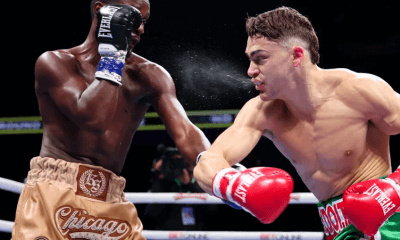
 Featured Articles2 weeks ago
Featured Articles2 weeks agoOscar Duarte and Regis Prograis Prevail on an Action-Packed Fight Card in Chicago
-
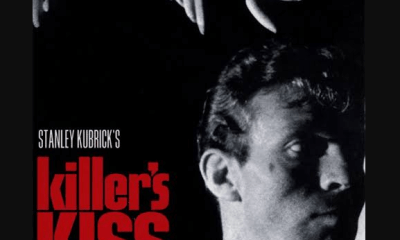
 Featured Articles1 week ago
Featured Articles1 week agoThe Hauser Report: Cinematic and Literary Notes
-
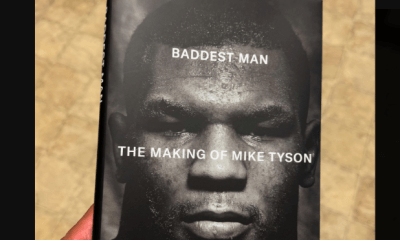
 Book Review5 days ago
Book Review5 days agoMark Kriegel’s New Book About Mike Tyson is a Must-Read
-
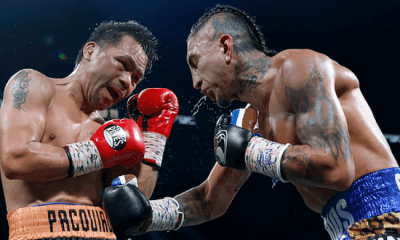
 Featured Articles4 weeks ago
Featured Articles4 weeks agoManny Pacquiao and Mario Barrios Fight to a Draw; Fundora stops Tim Tszyu
-
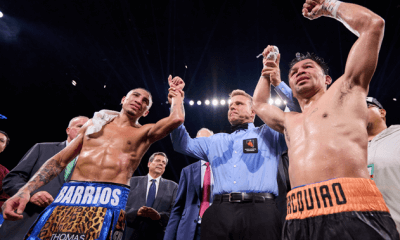
 Featured Articles4 weeks ago
Featured Articles4 weeks agoArne’s Almanac: Pacquiao-Barrios Redux
-

 Featured Articles3 weeks ago
Featured Articles3 weeks agoRemembering Dwight Muhammad Qawi (1953-2025) and his Triumphant Return to Prison
-
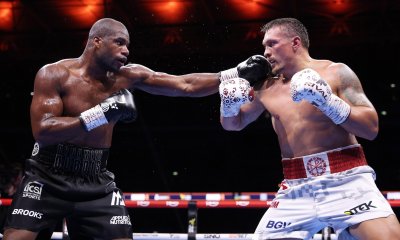
 Featured Articles4 weeks ago
Featured Articles4 weeks agoOleksandr Usyk Continues to Amaze; KOs Daniel Dubois in 5 One-Sided Rounds















